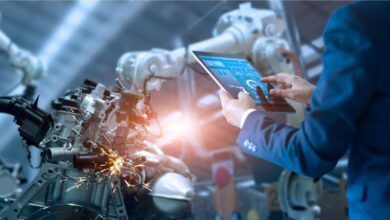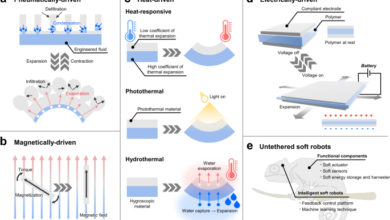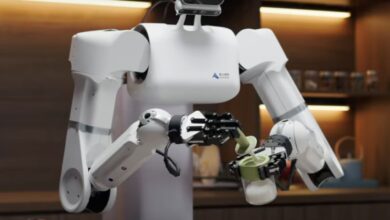Human by design: Innovators of humanoid robots prepare for widespread adoption

Humanoid robot technology is no longer a fantasy of fiction, but has become a hard-charging reality expected to shift the working environments of some of the world’s largest companies within the next decade.
Years of experimentation by international robotics and AI developers are culminating in a new class of humanoid robotics designed to surpass human capabilities in fields like production, shipment and everyday life.
Boston Dynamics retired its hydraulic Atlas robot and announced its next generation humanoid robot on Thursday. The new Atlas is fully electric with a broader range of motion, including specialty grippers that enable it to better manipulate assigned physical tasks.
Unitree Robotics, based in Hangzhou, China, has incorporated new breakthroughs in artificial intelligence (AI) into its designs, creating a robot with human-like balance and choice-making abilities in the face of a challenge.
AI’s advanced self-learning technology has decreased the length of time Unitree’s robot needs to fine tune its motor skills. What used to take seven years to program now only requires several months, the company’s CEO Wang Xingxing said.
“In the past, robots had to be programmed manually for different scenarios. For example, if there was a different terrain in front of it, or if there was a cup you wanted it to grab, we humans had to type in all those codes. So, it would take a lot of time and energy. Now with AI, you don’t need to change the model or put in more manpower. You just put it in a different simulated scenario and let it get the training,” Wang says.
Wang hopes that within one to two years these humanoid robots and their more dexterous fingers will be able to assist real human beings in factory production.
China is expected to contribute close to $50 billion to the global humanoid robot market, which is on track to surpass $260 billion by 2030 according to recent estimates reported by AP.
AI-powered general-purpose humanoid robots will soon be accessible to perform a myriad of work tasks efficiently and safely, reinventing workplace environments and solving labor shortage issues, according to Joe Lui, head of global advanced automation and robotics at Accenture, which recently acquired Sanctuary AI. It’s humanoid robot, Phoenix, can select and package items, clean, tag, label and fold merchandise. Phoenix uses AI technology that mimics human intelligence in the brain, like sight, sound, memory and feel.
Ameca, one of the most familiar ‘faces’ of humanoid robots, was acquired by the National Robotarium in Scotland, where communal instructional programs have been initiated to create better levels of understanding and trust for the new advances in machine and AI technology. The human-like robot, v2.0, is expected to mingle with the public in Scotland and beyond, visiting students and interacting with people through workshops and events.
As the AI-powered machines make the transition from the laboratory to the market, it is still expected to be a long and uncertain road into the next era where humans and humanoid robots work alongside each other or talk to each other on the street like a science fiction scenario.
While the latest batch of humanoid robots may be pushing the boundaries of artificial intelligence, machine learning, and mobility, they are still, for the most part, specialized prototypes.
But however dexterous or human-like a humanoid robot becomes, they are not sentient, have no long-term memory, and continue to run on code. How and how fast that code is generated will determine whether the machine ‘brains’ can get up to speed with human brains.
“Supply it with electricity, equip it with some GPU and CPU commuting power, and the robot takes care of training itself automatically.” Unitree’s Wang Xingxing says.
Researchers in China are working to enhance efficiency, reduce production costs and improve reliability to facilitate widespread adoption of humanoid robots in the near future, Chen Meng, senior engineer at the Institution of Automation, Chinese Academy of Science says.
Until then, humans will have to be flexible with their expectations and fears about AI or the threat of work automation through robotics in the future.



